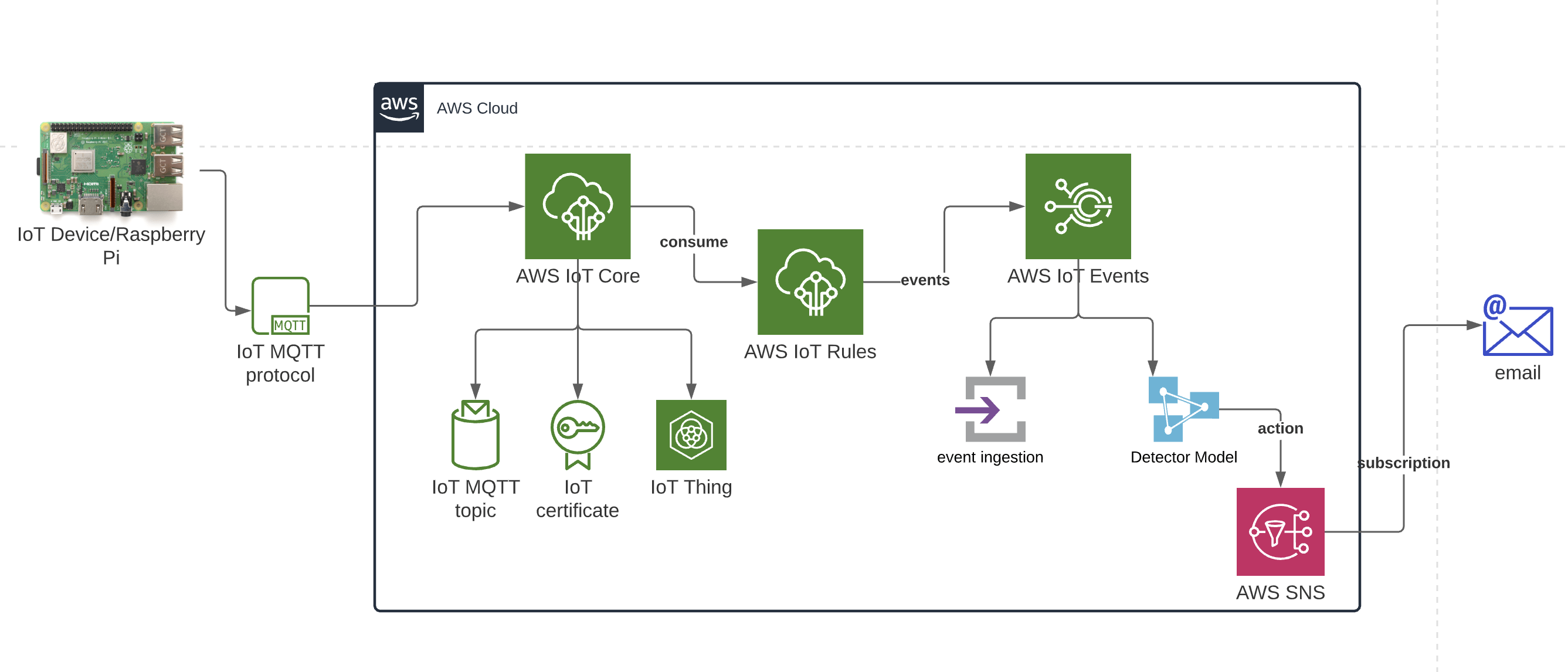In the modern era of connectivity, the Internet of Things (IoT) has emerged as a pivotal force driving technological progress. From smart homes to advanced industrial automation, IoT devices are reshaping everyday life and professional environments. However, as reliance on IoT grows, ensuring secure connections between these devices and remote networks becomes increasingly critical. One of the most effective solutions for achieving this is by utilizing Amazon Web Services (AWS) to establish a secure Virtual Private Cloud (VPC) environment. This article will walk you through the process of securely connecting a Raspberry Pi—an incredibly versatile IoT device—to a remote VPC using AWS. Additionally, it will guide you through downloading and configuring the necessary tools on a Windows system, ensuring a seamless and secure setup.
In today's digital landscape, safeguarding IoT devices is not merely a convenience but a fundamental necessity. As cyberattacks targeting IoT devices continue to rise, implementing robust security measures is essential. AWS offers an extensive suite of tools designed to help you establish secure connections between your Raspberry Pi and a remote VPC. This article will provide a detailed, step-by-step guide to achieving this goal, covering everything from setting up the VPC to configuring the Raspberry Pi and downloading the required software on a Windows machine.
Whether you are a seasoned developer, an IT professional, or a tech enthusiast, understanding how to securely connect remote IoT devices is vital. By the conclusion of this article, you will possess a thorough understanding of the tools, techniques, and best practices required to create a secure connection between your Raspberry Pi and AWS VPC. Let’s delve into the world of secure IoT connectivity and explore the possibilities it offers.
Read also:Kim Soo Hyun The Iconic Journey Of A Global Actor
Table of Contents
- Understanding IoT and AWS VPC
- The Importance of Secure Connections
- Setting Up AWS VPC
- Configuring Raspberry Pi for Remote Connection
- Installing AWS Tools on Windows
- Establishing a Secure Connection
- Troubleshooting Common Issues
- Best Practices for Secure IoT Connectivity
- Case Study: Real-World Implementation
- Conclusion and Next Steps
Understanding IoT and AWS VPC
The Internet of Things (IoT) refers to a network of interconnected physical devices equipped with sensors, software, and connectivity capabilities, enabling them to exchange data seamlessly. These devices span a wide spectrum, ranging from simple household appliances to sophisticated industrial machinery. One of the most significant challenges in managing IoT devices is ensuring secure and reliable communication between them and remote servers.
Amazon Web Services (AWS) addresses this challenge with its Virtual Private Cloud (VPC) service. A VPC allows you to create a logically isolated segment of the AWS cloud where you can launch resources in a virtual network. This setup provides enhanced security and control over your network environment, making it an ideal solution for IoT applications. By leveraging AWS VPC, you can ensure that your IoT devices, such as a Raspberry Pi, are securely connected to the cloud. This not only strengthens data privacy but also enhances the reliability of your IoT applications.
AWS VPC offers a variety of configurations, including public and private subnets, route tables, and network access control lists, allowing you to customize the network to meet your specific needs. These features empower you to build a secure and efficient network environment for your IoT devices.
The Importance of Secure Connections
Securing IoT connections is of paramount importance due to the sensitive nature of the data handled by these devices. IoT devices frequently collect and transmit personal, financial, or operational data, making them attractive targets for cyberattacks. A breach in IoT security can result in significant financial losses, damage to reputation, and even legal consequences.
One of the primary reasons secure connections are critical is the growing sophistication of cyber threats. Hackers are continually developing new techniques to exploit vulnerabilities in IoT devices. Without adequate security measures, these devices can become entry points for attackers to infiltrate your network. This underscores the necessity of implementing robust security protocols to protect your IoT infrastructure.
Furthermore, regulatory requirements, such as the General Data Protection Regulation (GDPR) and the Health Insurance Portability and Accountability Act (HIPAA), mandate stringent security measures for handling sensitive data. Non-compliance with these regulations can lead to substantial fines and penalties. By establishing secure connections, you not only safeguard your data but also ensure adherence to relevant regulations, mitigating potential legal risks.
Read also:Tia Mowry A Journey Of Strength Healing And Hope
Setting Up AWS VPC
Creating an AWS VPC involves several critical steps to ensure a secure and functional network environment. Begin by logging into the AWS Management Console and navigating to the VPC dashboard. From there, you can initiate the process of creating a new VPC by specifying the IP address range, subnet configurations, and other network settings. This foundational step is essential for establishing a secure network infrastructure tailored to your IoT needs.
Configuring Subnets and Route Tables
Subnets play a crucial role in dividing your VPC into smaller, more manageable sections. It is advisable to create both public and private subnets to separate resources that require internet access from those that should remain isolated. Public subnets are designed for resources that need internet connectivity, while private subnets are intended for resources that should remain secure and inaccessible from the internet.
Route tables are another vital component of your VPC configuration. They define how traffic flows within your network. Ensure that your route tables are properly configured to direct traffic to the appropriate subnets and internet gateways. This setup is crucial for maintaining network security and ensuring seamless communication between your IoT devices and the cloud.
Implementing Security Groups
Security groups function as virtual firewalls for your VPC resources, controlling inbound and outbound traffic based on predefined rules. When setting up security groups, specify the protocols, ports, and IP ranges that are allowed to communicate with your IoT devices. This step is essential for preventing unauthorized access and protecting your network from potential threats. By implementing robust security groups, you can significantly enhance the security of your IoT infrastructure.
Configuring Raspberry Pi for Remote Connection
The Raspberry Pi is a highly versatile and cost-effective device widely utilized in IoT projects. To securely connect it to your AWS VPC, proper configuration is essential. Start by ensuring your Raspberry Pi is running the latest version of its operating system, such as Raspberry Pi OS. This foundational step ensures compatibility and access to the latest security updates.
Installing Necessary Software
Installing the required software packages on your Raspberry Pi is crucial for facilitating secure communication. This includes tools like OpenSSH for remote access and the AWS IoT SDK for interacting with AWS services. Use the following commands to install these packages:
sudo apt updatesudo apt install openssh-serverpip install AWSIoTPythonSDK
Configuring SSH Access
SSH (Secure Shell) is indispensable for securely accessing your Raspberry Pi remotely. Generate SSH keys on your Windows machine and copy the public key to your Raspberry Pi. This process ensures that only authorized users can access the device, enhancing security. Use the following command to generate SSH keys:
ssh-keygen -t rsa -b 4096
Installing AWS Tools on Windows
To effectively manage your AWS resources from a Windows machine, you need to download and install the AWS Command Line Interface (CLI) and other necessary tools. Begin by downloading the AWS CLI from the official AWS website and following the installation instructions. This step is fundamental for gaining control over your AWS resources and ensuring a secure connection.
Configuring AWS CLI
Once the AWS CLI is installed, configure it by providing your access key, secret key, region, and output format. Use the following command to configure the CLI:
aws configure
This step is critical for authenticating your requests and ensuring secure communication with AWS services. Proper configuration of the AWS CLI is essential for managing your AWS resources effectively.
Installing AWS IoT Core SDK
The AWS IoT Core SDK enables you to interact with AWS IoT services seamlessly. Download and install the SDK for your preferred programming language, such as Python or Node.js. This SDK simplifies the process of connecting your Raspberry Pi to AWS IoT Core and managing IoT devices. By leveraging the SDK, you can streamline the development and deployment of your IoT applications.
Establishing a Secure Connection
With your AWS VPC and Raspberry Pi configured, the next step is to establish a secure connection. This involves setting up a secure tunnel using AWS IoT Core and ensuring that your Raspberry Pi can communicate with the VPC. This process is essential for creating a robust and secure IoT network.
Creating an IoT Thing
In the AWS Management Console, navigate to the IoT Core service and create a new IoT Thing. This represents your Raspberry Pi within the AWS ecosystem. Attach the necessary policies to the Thing to grant it the required permissions. This step ensures that your device can interact with AWS services securely and effectively.
Configuring Device Certificates
Device certificates are critical for authenticating your Raspberry Pi with AWS IoT Core. Generate and download the certificates from the AWS IoT Core console and install them on your Raspberry Pi. This step ensures that only authorized devices can connect to your AWS VPC, enhancing the security of your IoT network.
Troubleshooting Common Issues
While setting up a secure connection, you may encounter several common issues, including connectivity problems, authentication errors, and configuration mismatches. Understanding how to troubleshoot these issues is crucial for maintaining a reliable IoT network. This section will provide guidance on resolving these challenges effectively.
Checking Network Connectivity
Ensure that your Raspberry Pi has a stable internet connection and can reach the AWS VPC. Use tools like ping and traceroute to diagnose network issues. Additionally, verify that your security groups and route tables are correctly configured to allow traffic between your devices. Proper network configuration is essential for maintaining a secure and reliable IoT network.
Resolving Authentication Errors
Authentication errors often arise from incorrect certificate configurations or expired credentials. Double-check that your device certificates are correctly installed and that your AWS CLI is properly configured with valid access keys. Renew any expired credentials to resolve these issues. Proper authentication is vital for ensuring secure communication between your IoT devices and the cloud.
Best Practices for Secure IoT Connectivity
Implementing best practices is essential for maintaining secure IoT connectivity. These practices include regular software updates, strong authentication mechanisms, and continuous monitoring of your network. By adhering to these guidelines, you can significantly enhance the security of your IoT infrastructure.
Keeping Software Up-to-Date
Regularly updating the software on your Raspberry Pi and other IoT devices is crucial for patching vulnerabilities and enhancing security. Subscribe to security bulletins and apply patches promptly to protect your network from emerging threats. Staying current with software updates is a fundamental aspect of maintaining a secure IoT environment.
Implementing Multi-Factor Authentication
Multi-factor authentication (MFA) adds an additional layer of security by requiring users to provide extra verification beyond passwords. Enable MFA for your AWS account and IoT devices to prevent unauthorized access and protect sensitive data. Implementing MFA is a highly effective strategy for enhancing the security of your IoT network.
Case Study: Real-World Implementation
To demonstrate the effectiveness of securely connecting IoT devices to AWS VPC, consider the following case study. A manufacturing company implemented AWS IoT Core to monitor and control its production line equipment remotely. By leveraging Raspberry Pi devices and AWS VPC, the company achieved real-time data collection and analysis, leading to improved efficiency and reduced downtime.
Results and Benefits

